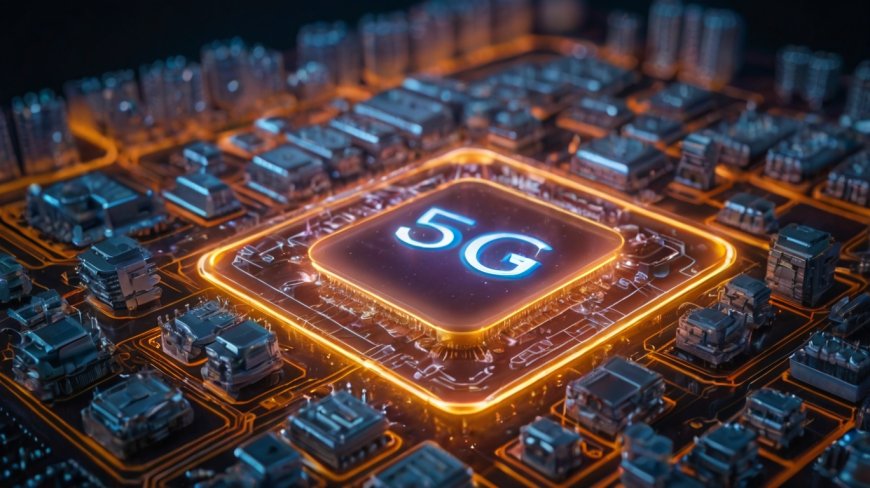5G and Its Impact on Software Development
Explore how the rollout of 5G networks is enabling faster, more responsive, and innovative software applications

5G and Its Impact on Software Development
The advent of 5G technology represents a transformative leap in connectivity, offering unprecedented speed, ultra-low latency, and enhanced reliability. As the fifth generation of mobile networks becomes the backbone of communication, its influence on software development is profound. From enabling innovative applications to redefining user experiences, 5G is reshaping how software is designed, deployed, and utilized.
This blog explores the key aspects of 5G, its impacts on software development, real-world applications, challenges, and future trends.
What is 5G?
5G is the latest iteration of mobile network technology, promising:
- High-Speed Data Transmission: Speeds up to 10 Gbps, significantly faster than 4G LTE.
- Ultra-Low Latency: Reducing latency to as low as 1 millisecond, enabling real-time interactions.
- Massive Device Connectivity: Supporting up to a million devices per square kilometer.
- Enhanced Reliability: Ensuring consistent and dependable connections, even in high-demand environments.
These features enable software developers to create solutions previously constrained by network limitations.
Impact of 5G on Software Development
-
Enhanced Performance and Speed
- Faster data transfer rates allow developers to build feature-rich applications with high-resolution content, seamless video streaming, and real-time interactions.
- Example: Mobile apps can now offer 4K video streaming and immersive AR/VR experiences without buffering.
-
Expansion of IoT Applications
- 5G’s massive device connectivity supports the proliferation of Internet of Things (IoT) devices, enabling developers to create interconnected systems for smart cities, homes, and industries.
- Example: Developers can build IoT applications for real-time monitoring in healthcare, agriculture, and logistics.
-
Advancements in Edge Computing
- With reduced latency, data processing shifts closer to the user through edge computing, enhancing speed and reducing server load.
- Example: Autonomous vehicles rely on edge computing to process sensor data instantly for navigation and safety.
-
Real-Time Applications
- Ultra-low latency enables real-time applications in gaming, remote surgeries, and collaborative tools.
- Example: Developers can create cloud-based gaming platforms offering console-quality experiences on mobile devices.
-
Redefined User Experiences
- High-speed and low-latency networks allow for smoother, more interactive user experiences.
- Example: AR/VR applications for virtual shopping or remote collaboration become more accessible and responsive.
-
Cloud-Native Development
- The reliability of 5G networks facilitates cloud-native software development, where applications rely on cloud resources for scalability and performance.
- Example: SaaS applications can offer real-time collaboration tools with enhanced responsiveness.
Challenges for Developers in the 5G Era
-
Infrastructure Variability
- 5G rollout varies across regions, creating inconsistent user experiences.
- Solution: Design applications to adapt to different network speeds and conditions.
-
Security Concerns
- Increased connectivity expands the attack surface for cyber threats.
- Solution: Implement robust security protocols and encryption for data transmission.
-
Higher Development Costs
- Building 5G-optimized applications may require advanced tools and testing environments.
- Solution: Leverage 5G emulators and collaborate with network providers to optimize costs.
-
Learning Curve
- Developers need to understand new paradigms like edge computing and 5G-specific APIs.
- Solution: Invest in training and upskilling to stay competitive in the 5G landscape.
-
Power Consumption
- 5G-enabled applications and devices may consume more energy, requiring optimization.
- Solution: Optimize code and utilize energy-efficient algorithms for better battery management.
Real-World Applications of 5G in Software Development
-
Smart Cities
- IoT-enabled infrastructure powered by 5G enhances urban planning, traffic management, and public safety.
- Example: Real-time traffic monitoring and smart lighting systems.
-
Healthcare
- 5G enables remote patient monitoring, telemedicine, and robotic-assisted surgeries.
- Example: Surgeons perform remote surgeries using robotic arms controlled via low-latency 5G networks.
-
Gaming and Entertainment
- Cloud gaming platforms deliver high-quality games on-demand without requiring high-end hardware.
- Example: NVIDIA GeForce Now and Google Stadia leverage 5G for seamless gaming experiences.
-
Retail and E-Commerce
- AR/VR technologies powered by 5G enable virtual try-ons and immersive shopping experiences.
- Example: Customers visualize furniture in their homes using AR apps.
-
Industrial Automation
- Factories use IoT and 5G for real-time monitoring, predictive maintenance, and automation.
- Example: Smart factories optimize production lines using connected devices and AI.
Best Practices for Developing 5G-Optimized Applications
-
Design for Scalability
- Build applications that can handle increased user demand and data loads.
-
Optimize for Low Latency
- Use lightweight protocols and edge computing to minimize delays.
-
Enhance Security
- Implement end-to-end encryption and secure APIs to protect against cyber threats.
-
Leverage Cloud and Edge Integration
- Combine cloud resources with edge computing to optimize performance and cost-efficiency.
-
Test Across Networks
- Ensure applications function seamlessly across varying network conditions, including 4G and 5G.
Future Trends in 5G and Software Development
-
Integration with AI
- AI-powered applications will leverage 5G for real-time analytics and decision-making.
-
Expansion of AR/VR
- Enhanced connectivity will drive adoption of immersive technologies in education, retail, and healthcare.
-
Rise of Autonomous Systems
- Drones, robots, and self-driving cars will rely on 5G for instant communication and processing.
-
Smart Workplaces
- 5G will enable remote collaboration tools with real-time video and immersive experiences.
-
Enhanced Cybersecurity Solutions
- Advanced security measures will address the complexities of 5G networks and applications.
Conclusion
5G is more than just a network upgrade; it’s a catalyst for innovation in software development. By offering unparalleled speed, connectivity, and reliability, 5G empowers developers to create applications that were once unimaginable. From IoT and edge computing to AR/VR and smart cities, the possibilities are endless.
To thrive in the 5G era, developers must embrace new paradigms, address emerging challenges, and leverage the full potential of this transformative technology. The future of software development is here, and it’s powered by 5G.

 datawaves
datawaves 





